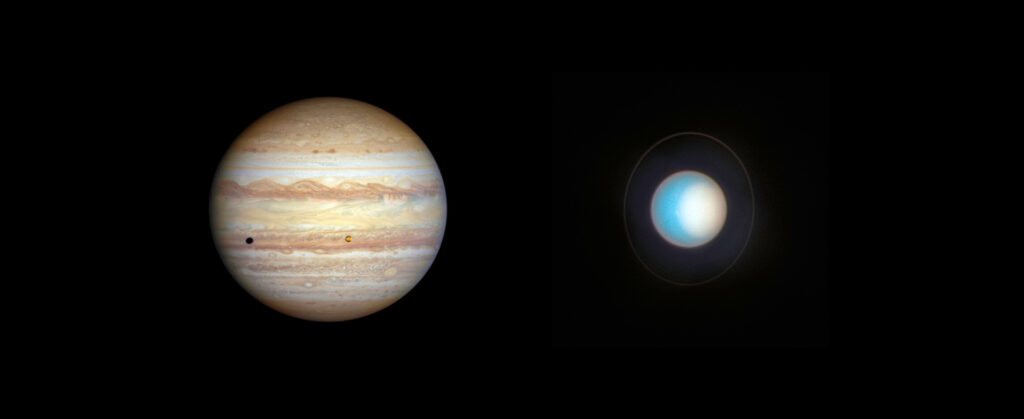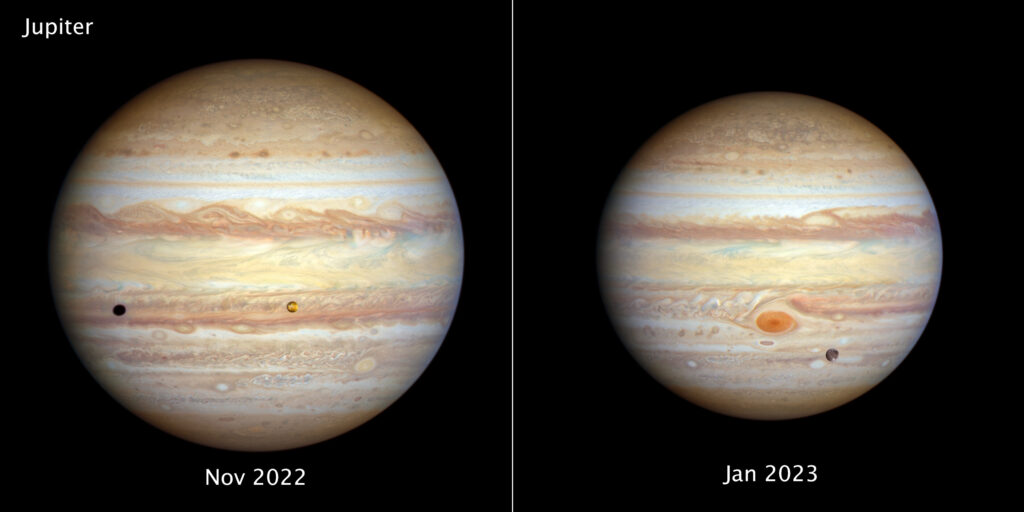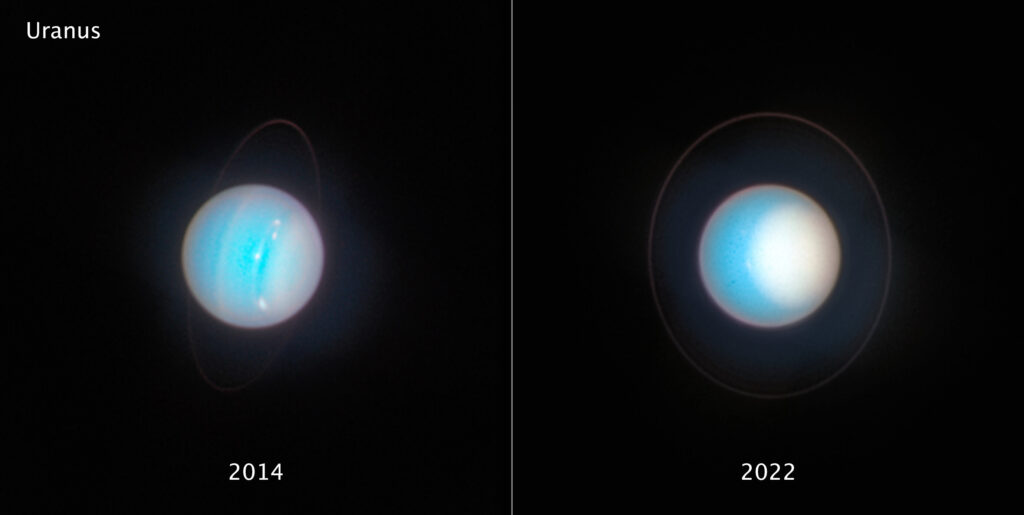The Hubble mission support team has published new portraits of Jupiter and Uranus. They demonstrate the seasonal changes that have occurred at the gas giants.

Since its launch, the Hubble Space Telescope has been regularly monitoring the weather on the outer planets of the Solar System. Over the past three decades, it has recorded the appearance and development of many curious meteorological phenomena, including the formation and disappearance of various storms, as well as changes in the color of cloud cover.
Weather on Jupiter
One of the main factors affecting Jupiter‘s weather cycles is that it emits more energy than it receives from the Sun. This additional heat affects the color of the cloud cover and the frequency of cyclones and anticyclones.

Hubble has observed Jupiter twice in the last six months. The image taken in November 2022 shows powerful storms in the low northern latitudes. A chain of alternating storms forms a wave pattern of cyclones and anticyclones nested in each other, linked together like alternating gears of a machine moving clockwise and counterclockwise.
If the storms come close enough to each other, then in theory they can merge and create a giant storm that can compete with the Great Red Spot. However, this is a rather unlikely scenario. The checkerboard arrangement of anticyclones and cyclones usually prevents the merging of individual storms. Activity is also observed inside these storms. Curiously, in the 1990s Hubble did not see any cyclones or anticyclones with thunderstorms.
In the November Hubble image, you can also see the orange Io and the shadow it casts. The resolution of the telescope allows us to examine the spotted surface of this moon, formed as a result of the incessant eruptions of numerous volcanoes. As for the January picture, Ganymede got on it. It is the largest moon of the system in the Solar System. Its dimensions exceed the size of Mercury.
Weather on Uranus
The weather cycles of Uranus are determined by its 84-year period of orbit around the Sun, the fact that it emits very little heat (Uranus is the coldest planet in the Solar System), as well as the position of the axis of rotation.The fact is that it is located “on its side” relative to the plane of orbit of this planet around the Sun. Because of this, Uranus is experiencing a very unusual change of seasons. For half of the year on Uranus (42 Earth years), the planet faces the Sun with one pole, while the other is hidden in the night. Then the situation changes.

The first picture of Uranus was taken in 2014, seven years after the vernal equinox in the Northern Hemisphere of the planet. The photo shows multiple storms with clouds of methane ice crystals in the middle northern latitudes over the bluish lower layers of the planet’s atmosphere. Also, it is possible to see a thin strip of the rings of the seventh planet.
The image taken in November 2022 shows a noticeably grown “cap” of high-altitude haze over the North Pole. It’s a bit like urban smog. Several small storms can also be seen near the border of the polar haze. According to scientists, as the summer solstice approaches in the Northern Hemisphere, it will become even brighter and will be directed directly at the Earth, which will give an ideal opportunity to look at the north pole of the planet, as well as its rings.
According to https://esahubble.org
Follow us on Twitter to get the most interesting space news in time
https://twitter.com/ust_magazine

